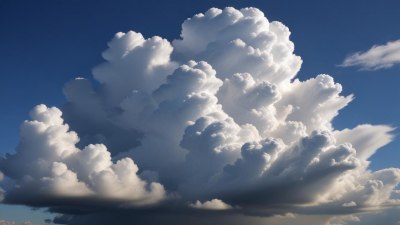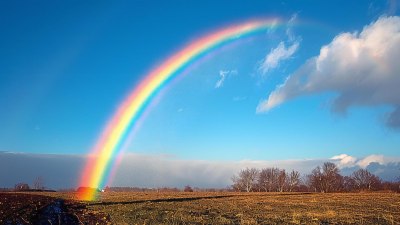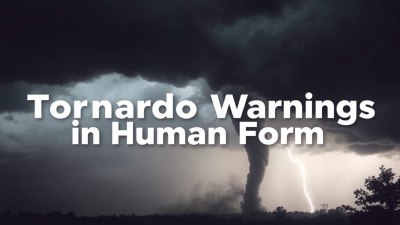How Clouds Gossip About the Weather Before It Happens
Discover how clouds communicate and predict weather phenomena before they occur.

This image was created with the assistance of Freepik
Weather is an intricate dance between many elements, and clouds play a crucial role in this constantly changing tapestry. In this article, we'll explore how clouds can be seen as nature's whispers, gathering and disseminating information that helps us predict the upcoming weather. As we delve into this fascinating topic, we’ll discuss the various types of clouds, their formations, and the vital information they provide about our atmosphere.
The Science of Clouds
Clouds are formed when water vapor in the air condenses into tiny water droplets or ice crystals. This process occurs when moist air rises, expands, and cools, reaching its dew point. The three primary cloud types – cumulus, stratus, and cirrus – each tell us something different about atmospheric conditions.
Cumulus Clouds: The Showers of Tomorrow
Cumulus clouds, with their fluffy, white appearance, are often associated with fair weather. However, their transformation into towering cumulonimbus clouds can precede thunderstorms. When meteorologists observe strong updrafts in cumulus clouds, they can predict potential precipitation. This is how clouds begin their 'gossip' about impending rain.
Stratus Clouds: The Harbingers of Overcast Skies
Stratus clouds appear as uniform gray layers covering the sky. They are typically associated with light precipitation and overcast conditions. When stratus clouds form, they indicate stable air masses and often signal that rain or snow could follow. Observations of these clouds guide meteorologists in making forecasts, serving as a sign of weather patterns shifting.
Cirrus Clouds: The Indicators of Change
Cirrus clouds, characterized by their wispy appearance, often indicate that a change in the weather is on the horizon. These high-altitude clouds form when there are shifts in wind patterns and can suggest an incoming front. When these clouds appear, it's an essential clue that meteorologists use to anticipate everything from storms to fair weather.
Cloud Formation Processes
The processes of cloud formation are essential for understanding how they 'gossip' about weather changes. Convection, or the rising of warm air, can lead to cumulus cloud formation, while cooler temperatures at higher altitudes can contribute to cirrus cloud development. Additionally, frontal systems – where warm and cold air masses meet – can lead to robust cloud activity, informing meteorologists about changes in weather patterns.
The Role of Atmospheric Conditions
Clouds do not operate in isolation; they are influenced by many atmospheric conditions. Pressure systems, humidity levels, and wind patterns all contribute to cloud development and their potential implications for weather. For instance, a low-pressure system encourages cloud formation and precipitation, whereas high pressure leads to clearer skies.
The Connection Between Clouds and Precipitation
Clouds act as the forerunners to precipitation, indicating when and where rain or snow may occur. The type of cloud present plays a significant role in determining the nature of the precipitation. For example, cumulonimbus clouds often generate thunderstorms, while stratus clouds may lead to light, steady rain. Through analyzing cloud types and formations, meteorologists can predict not just whether it will rain, but how much.
Technological Advancements in Weather Prediction
Advancements in technology have significantly improved our ability to understand and predict weather based on cloud observations. Satellite imagery provides real-time data on cloud formations and movements, allowing meteorologists to track weather patterns more accurately. Doppler radar can measure precipitation intensity and wind speeds, guiding timely warnings and forecasts.
Impact of Climate Change on Cloud Behavior
As the climate continues to change, the behavior of clouds is also being affected. Research shows that warmer air can hold more moisture, leading to changes in cloud formation and precipitation patterns. These shifts can affect not only local weather patterns but also broader climatic conditions. Understanding these changes is crucial for accurate forecasting and for preparing for extreme weather events.
The Human Side of Cloud Watching
While meteorologists rely on science and technology to predict weather, many people still engage in the simpler pleasure of cloud watching. Identifying different types of clouds and their potential implications serves as an everyday connection to the atmosphere. Clouds can convey life lessons about change, impermanence, and the interconnectedness of all natural phenomena. Fostering a deeper appreciation for clouds can encourage individuals to pay closer attention to weather patterns and engage with the world around them.
Clouds as Symbols in Culture
Throughout history, clouds have been symbolic in various cultures, often representing change and uncertainty. In literature and mythology, clouds can signify hope, foreboding, or the passage of time. They inspire creativity and provide a canvas for human expression. This cultural connection to clouds underscores their significance beyond mere weather phenomena; they are woven into the human experience and understanding of the natural world.
Listening to the Whispering Skies
In summary, clouds serve as nature's communicators, revealing critical information about our weather before it happens. By understanding the types of clouds and their formation processes, we can better interpret what is happening in our atmosphere. As we look to the skies, we should appreciate the role clouds play in not only predicting weather but also connecting us to the larger patterns of nature. Each cloud formation holds a story, whispering secrets of the changes that lie ahead.











